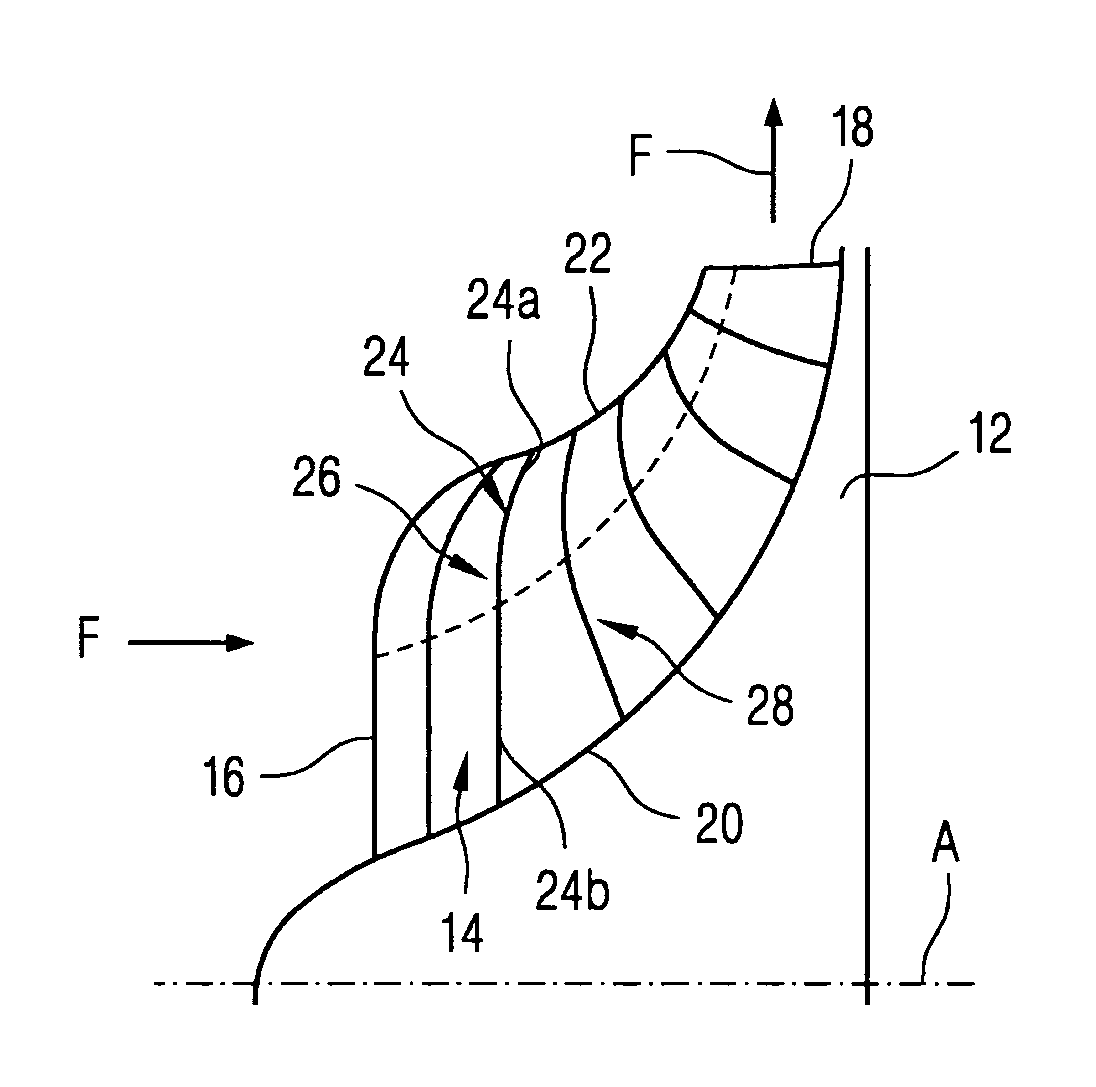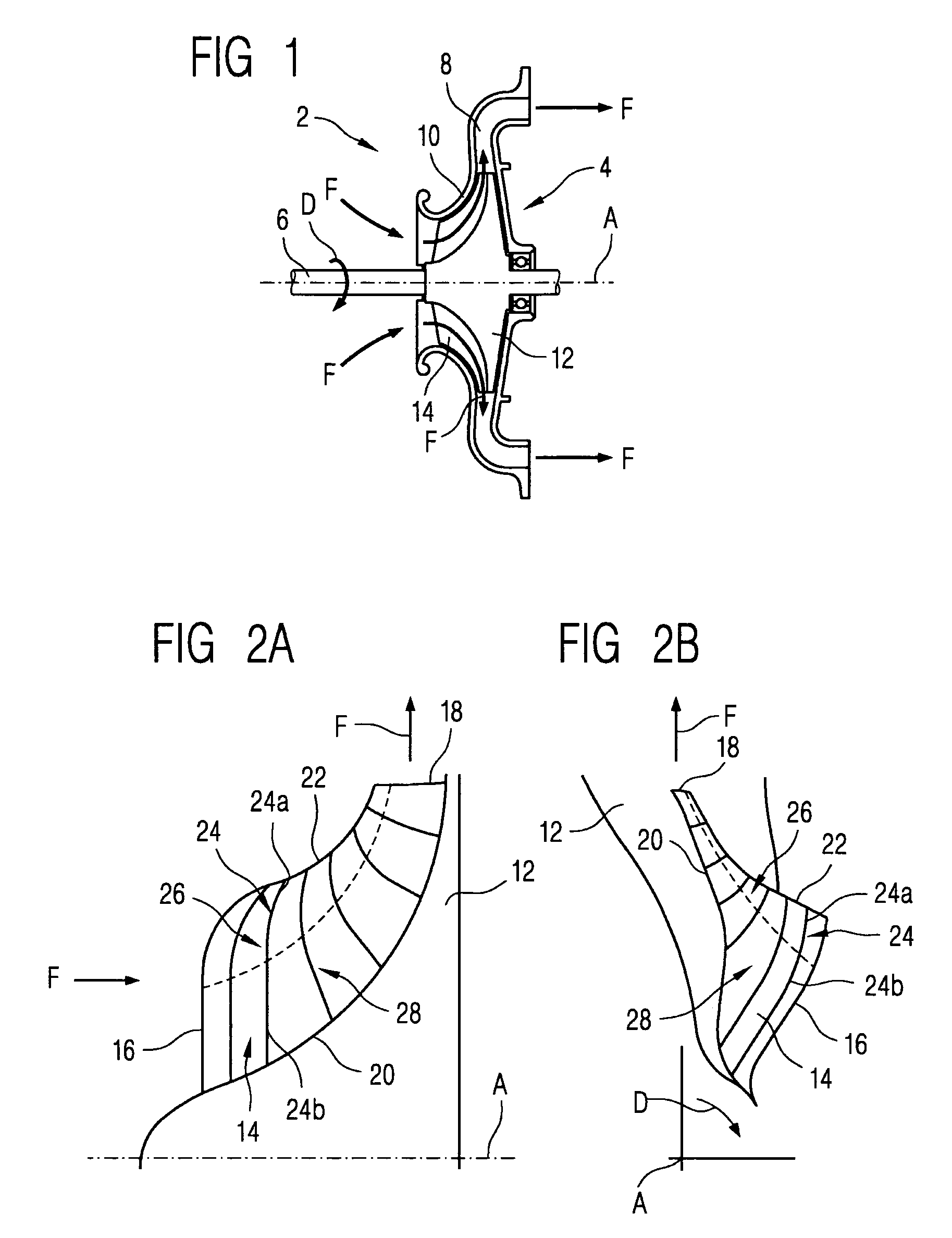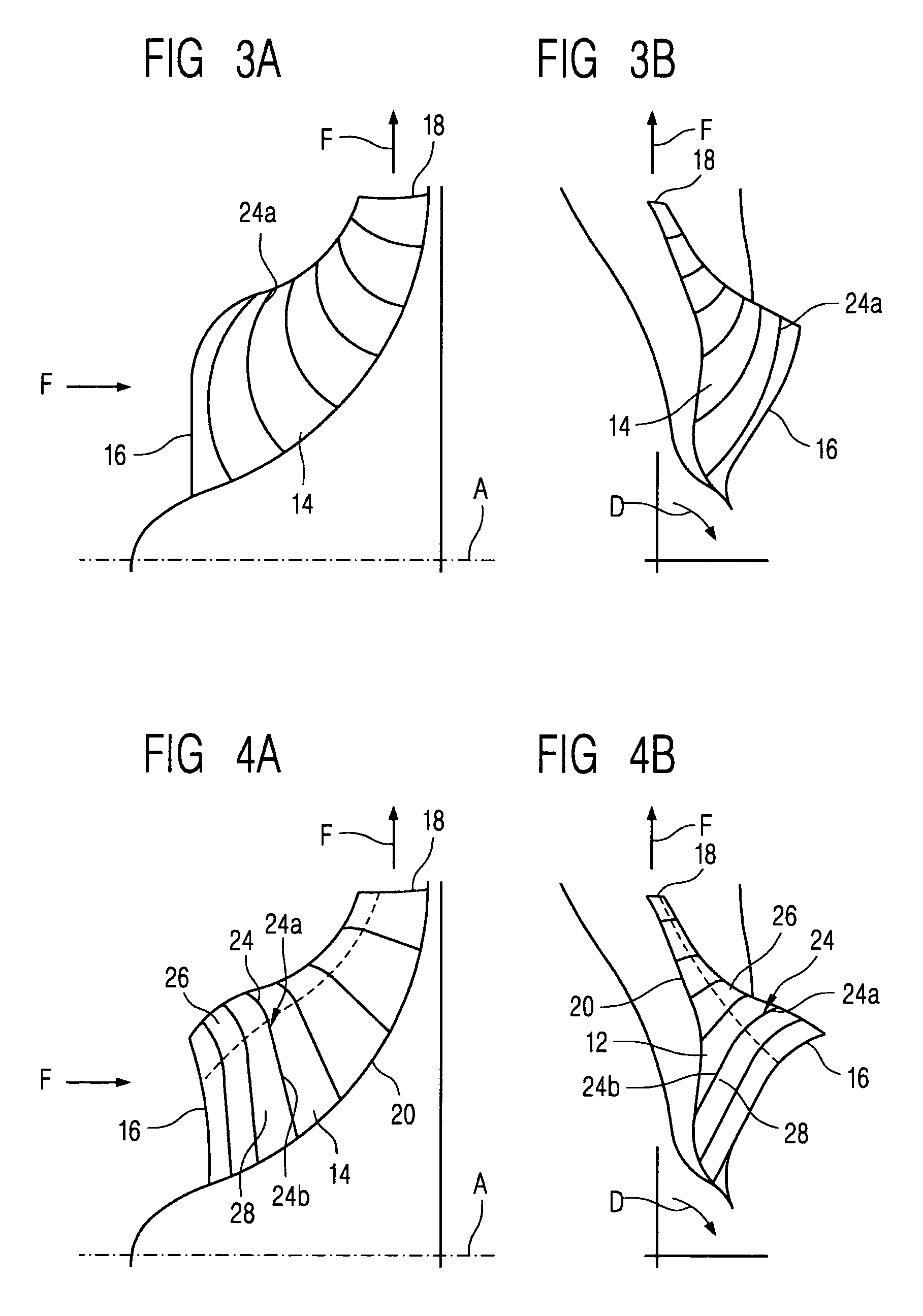Radial compressor rotor
a rotor and radial compressor technology, applied in the direction of forging/pressing/hammering equipment, marine propulsion, vessel construction, etc., can solve the problems of limiting the operation range of a radial compressor, unable to ensure stable operation, and unable to use a radial compressor on the other side, so as to improve the flow behavior, stabilize the characteristic of the compressor, and improve the effect of flow behavior
- Summary
- Abstract
- Description
- Claims
- Application Information
AI Technical Summary
Benefits of technology
Problems solved by technology
Method used
Image
Examples
Embodiment Construction
[0041]A radial compressor 2 working in a single-flow manner (delivery gas feed only from one side) and in a single-stage manner is shown in FIG. 1. The radial compressor 2 comprises a rotor 4, a shaft 6, which rotates in rotation direction D and on which the rotor 4 is attached and which defines an axial direction A, and a diffuser 8 and a cover disk 10. The rotor 4 consists of a wheel disk 12 and a plurality of blades 14 arranged over the circumference.
[0042]The delivery gas is drawn in axially in the region of the shaft 6 and is accelerated radially outward by the centrifugal force through the passages produced between the blades. This is indicated by the arrows F, which specify the flow direction of the delivery gas. In the process, both the velocity and the pressure of the delivery gas increase. The flow is decelerated in the diffuser 8, which leads to a further increase in the pressure of the delivery gas. After the compression, the delivery gas leaves the radial compressor aga...
PUM
| Property | Measurement | Unit |
|---|---|---|
| size | aaaaa | aaaaa |
| mechanical energy | aaaaa | aaaaa |
| pressure energy | aaaaa | aaaaa |
Abstract
Description
Claims
Application Information
 Login to View More
Login to View More - R&D
- Intellectual Property
- Life Sciences
- Materials
- Tech Scout
- Unparalleled Data Quality
- Higher Quality Content
- 60% Fewer Hallucinations
Browse by: Latest US Patents, China's latest patents, Technical Efficacy Thesaurus, Application Domain, Technology Topic, Popular Technical Reports.
© 2025 PatSnap. All rights reserved.Legal|Privacy policy|Modern Slavery Act Transparency Statement|Sitemap|About US| Contact US: help@patsnap.com



